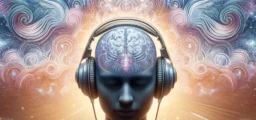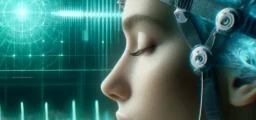Where Does an OBE Take Place?

In reviewing hundreds of personal reports, there are many similar characteristics in the experiences of NDE’s and OBE’s. After looking at the reports, there were about 8 prominent characteristics that were similar to the two. These reports were made by paranormal investigators at the Rhine Research Center. They were turned in and recorded via mail, telephone, or email to the center on their OBE and NDE experiences. To understand the characteristics lets discuss each one to get an understanding of each experience.
OBE – Out of Body Experience
An out of body experience (OBE) is a subjective experience in which one’s consciousness seems to depart from the body, enabling him or her to perceive the physical world from the outside. The term out of body experience is often used interchangeably with astral projection, The two phenomena, however, are different.. Astral projection, is the idea that a person can consciously project their consciousness or astral body. The astral world is a slight replica of the physical world but have many different characteristics of the physical world. Unlike an OBE, an astral projection does not require one’s consciousness to travel through the physical world and being able to perceive physical reality from outside the body.
Out of body experiences can be spontaneous, especially when someone experiences it for the first time. The sensation of separating from the physical body may make a person feel as if they are dying. AN OBE can be an exhilarating experience, allowing them to fly and walk through walls with an enhanced sense of perception. Out-of-body experiences can be spiritually transforming, affirming the existing of the soul and the afterlife.
A common trait of most OBEs is that the person experiencing the phenomenon seems to perceive the world from a location outside his or her physical body. There are no 2 cases of out of body experiences that are identical, but there are many similar characteristics of the experience. Out of body experiences are quite common and mostly spontaneous. A patient undergoing a surgery might see his own body being operated on during the operation.
When one falls asleep, the brain shuts down his ability to move his limbs, so that he does not physically respond to images in his dreams. An OBE can be induced by maintaining mental alertness as one enters sleep paralysis, that is, by prolonging the intermediary state between wakefulness and sleep. This transition state is often characterized by vibratory sounds and sensations. By mentally prolonging the “vibrations”, the transition state may be used as a launch pad for an out-of-body experience or lucid dream.
Out-of-body experiences also can be induced by mental exercises. There are many techniques to induce OBE. Many of the techniques rely on relaxation, imagery, and concentration. The ideal state seems to be one of physical relaxation accompanied by mental alertness.
When one falls asleep, the brain shuts down his ability to move his limbs, so that he does not physically respond to images in his dreams. An OBE can be induced by maintaining mental alertness as one enters sleep paralysis, that is, by prolonging the intermediary state between wakefulness and sleep. This transition state is often characterized by vibratory sounds and sensations. By mentally prolonging the “vibrations”, the transition state may be used as a launch pad for an out-of-body experience or lucid dream.
NDE – Near Death Experience
A near-death experience (NDE) is an experience where a person dies and come back to life. Looking into NDE’s can help determine how consciousness can become separated from the brain. The majority of current scientific data comes from case collections and surveys. There no scientific confirmation that consciousness can endure body death. Science doesn’t have the tools to measure consciousness or that the mind / spirit is separate from the brain. They recommended way to prove a NDEs encompasses veridical perception. Veridical perception is information obtained while in the near death experience that would not of been able to be acquired. If a controlled experiment in which it’s predictable for someone to have a NDE and then be tested on information they would not of been able to obtain. By taking a closer look and working with patients we could start to understand the phenomena.
Multiple sensations including detachment from the body, panoramic memory, intense emotions, dissolution from self, encasing light, and more. Interpretation of these events often corresponds with the beliefs of the person experiencing it. Aside from religious views there are some very common characteristics and after effects of near-death experiences.
- NDEs generally occur while unconscious or clinically dead. The elements in NDEs generally follow a consistent and logical and order.
- A life reviews in NDEs that includes real events that took place in their life
- Communication with spirits of usually deceased relatives.
- Changes in the lives of NDErs after their experiences, the NDE aftereffects, are common. Aftereffects are often powerful, lasting, and the changes follow a consistent pattern.

There are various similar characteristics in the experiences of NDE’s and OBE’s. After reviewing hundreds of reports on OBE and NDE experiences as reported subjects, these were the most prominent characteristics that were similar to the two. The reports were according to paranormal investigators, subjects of OBE’s, and collaborated by subjects of NDE’s:
1. A feeling of being very much alive, mentally lucid, and a oneness with everything in the universe.
2. A feeling of euphoria, of peace and joy, with a full control of mental faculties.
3. The use of thought and desire as communication and travel.
4. Discovery of an “astral body” that is able to fly, pass through objects, and may effect the physical environment.
5. Discovery of other spirits, sentient beings, deceased family members, and religious figure.
6. Enhanced psychic senses and full awareness of the surroundings of the physical body.
7. An intense “dream like” state in which the experience is recalled after the fact.






6 comments
Good post. I will be dealing with some of these issues as well.. Brietta Pierson Kwok
Very informative blog article. Much thanks again. Fantastic.
Helpful information. Fortunate me I found your site by accident, and I am surprised why this twist of fate did not happened in advance! I bookmarked it.
Everything is very open with a precise explanation of the issues. It was definitely informative. Your site is very helpful. Thank you for sharing.
This is one awesome post. Much thanks again. Awesome.
I was recommended this blog through my cousin. I am not certain whether this put up is written through him as no one else realize such distinct approximately my trouble. You are amazing! Thank you!
Comments are closed.